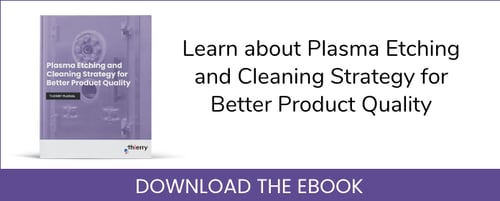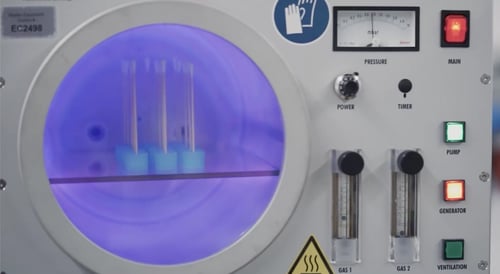Modern plasma technology is tailored to its specific purposes and is more flexible compared to earlier plasma systems. Additional accessories and specifications can be included into the design and manufacturing of each machine. For example, one plasma etching step may use a gas mixture of four different gases to achieve a desired result. Having the ability to add more gases or to share controllers between multiple gases may be essential in accomplishing certain results.
The size (width, depth, and height) of the plasma etching systems may be manufactured to the desired specifications. In addition, customers of the plasma etching systems may customize the vacuum chamber by choosing the chamber configuration, material, chamber cover, and size. The chamber cover options include a cap or a hinged door. A hinged door may be higher priced, but in a setting such as a university laboratory it is more prudent to have a hinged door instead of a cap. Quartz glass as a material for the vacuum chamber is recommended for medical technology purposes because of its ultra-clean aspects. Some plasma etching systems use thermal conductivity-type mass flow controllers (MFCs) for gas monitoring. MFCs allow for constant adjustment and programmability. Other simpler ways to monitor gas flow is to use a rotameter and fixed flow needle valves.
The tray(s), electrodes, generator, vacuum pump, and optional equipment can also be designed to fit the needs of the customer. The tray type (flat, quartz glass boat, or rotary drum), shape (round or rectangular), material, dimensions and quantity are all specifications that can be selected. The types of control for the plasma etching system are semi-automatic, fully automatic, PCCE-Control, low budget PC-Control, and full PC-Control. All of these control types (with the exception of semi-automatic and fully automatic) also include additional options. The variety of options available results in a plasma etching process tailored to each customer.
Plasma Etcher Parameters
Parameters in a plasma etcher can be varied by power, pressure, process time, reactant gas flow, flow ratio of reactants, and temperature. The reactive species in plasma etching systems are important. The following is a list of requirements for the reactive species: High selectivity for etching the desired substrate material and not the masking material. High plasma etching rate for the substrate material. Good etching uniformity The pressure of the plasma etcher controls the quantity of ions and free radicals in the chamber. The radio frequency (RF) power input should be chosen in order to obtain the largest etch rate and to minimize undesired etching of other materials.

